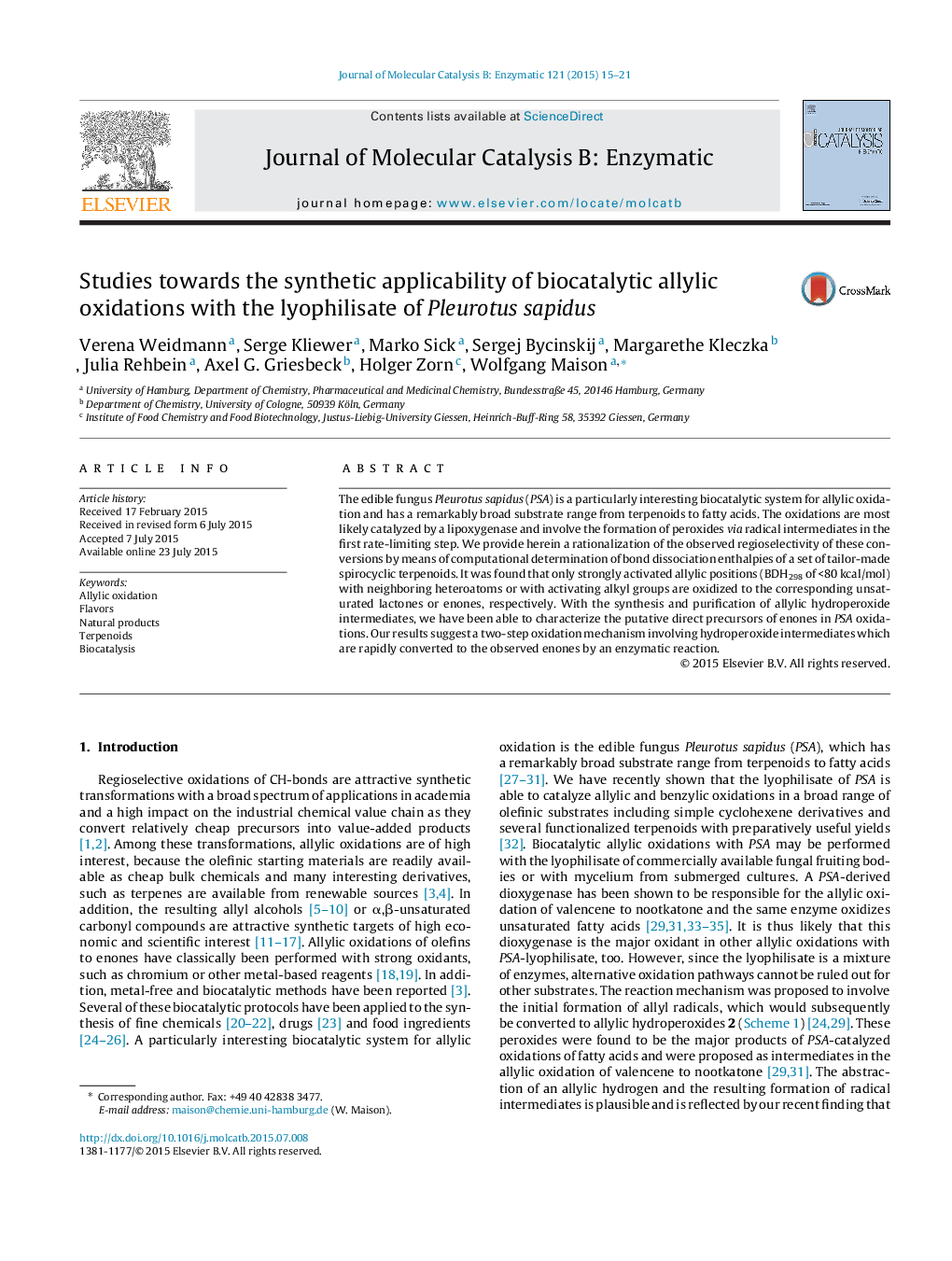| Article ID | Journal | Published Year | Pages | File Type |
|---|---|---|---|---|
| 69468 | Journal of Molecular Catalysis B: Enzymatic | 2015 | 7 Pages |
•Several new isoprenoid substrates have been oxidized with the lyophilisate of Pleurotus sapidus (PSA).•Hydroperoxide intermediates have been synthesized and were converted enzymatically.•CH-bond dissociation enthalpies <80 kcal/mol are essential for biocatalytic oxidations.•Oxidations with PSA are easy to perform and have a broad synthetic scope.
The edible fungus Pleurotus sapidus (PSA) is a particularly interesting biocatalytic system for allylic oxidation and has a remarkably broad substrate range from terpenoids to fatty acids. The oxidations are most likely catalyzed by a lipoxygenase and involve the formation of peroxides via radical intermediates in the first rate-limiting step. We provide herein a rationalization of the observed regioselectivity of these conversions by means of computational determination of bond dissociation enthalpies of a set of tailor-made spirocyclic terpenoids. It was found that only strongly activated allylic positions (BDH298 of <80 kcal/mol) with neighboring heteroatoms or with activating alkyl groups are oxidized to the corresponding unsaturated lactones or enones, respectively. With the synthesis and purification of allylic hydroperoxide intermediates, we have been able to characterize the putative direct precursors of enones in PSA oxidations. Our results suggest a two-step oxidation mechanism involving hydroperoxide intermediates which are rapidly converted to the observed enones by an enzymatic reaction.
Graphical abstractFigure optionsDownload full-size imageDownload as PowerPoint slide
